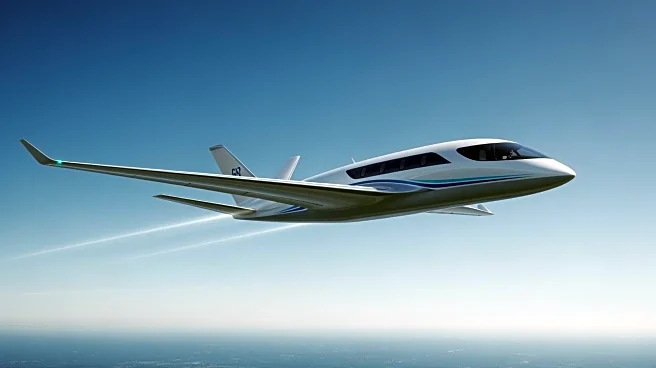What's Happening?
Air New Zealand has partnered with BETA Technologies to launch its first electric aircraft, marking a significant milestone in the airline's Next Generation Aircraft program. The aircraft, manufactured
in the United States, took off from Tauranga Airport and is set to be based at Hamilton Airport before moving to Wellington Airport in December. This initiative is part of Air New Zealand's efforts to explore sustainable aviation technologies and understand their potential applications in New Zealand and globally. The ALIA CX300 aircraft, leased for four months, will undergo a series of test flights to evaluate its performance in various conditions and altitudes.
Why It's Important?
The introduction of electric aircraft by Air New Zealand represents a pivotal step towards sustainable aviation, aligning with global efforts to reduce carbon emissions in the industry. This initiative could pave the way for broader adoption of electric aircraft, potentially transforming regional air travel by offering quieter, more efficient, and environmentally friendly alternatives to traditional aircraft. The collaboration with BETA Technologies highlights the importance of international partnerships in advancing aviation technology. Successful implementation could influence regulatory policies and encourage other airlines to invest in similar technologies, ultimately contributing to a more sustainable future for the aviation industry.
What's Next?
As the test flights progress, Air New Zealand and BETA Technologies will gather data to assess the aircraft's operational capabilities and potential for commercial service. The findings will inform future decisions regarding the integration of electric aircraft into the airline's fleet. Additionally, the project may lead to further collaborations with other technology providers and regulatory bodies to advance sustainable aviation solutions. Public demonstrations and pilot training programs are expected to increase awareness and acceptance of electric aviation technology, potentially accelerating its adoption in other regions.













